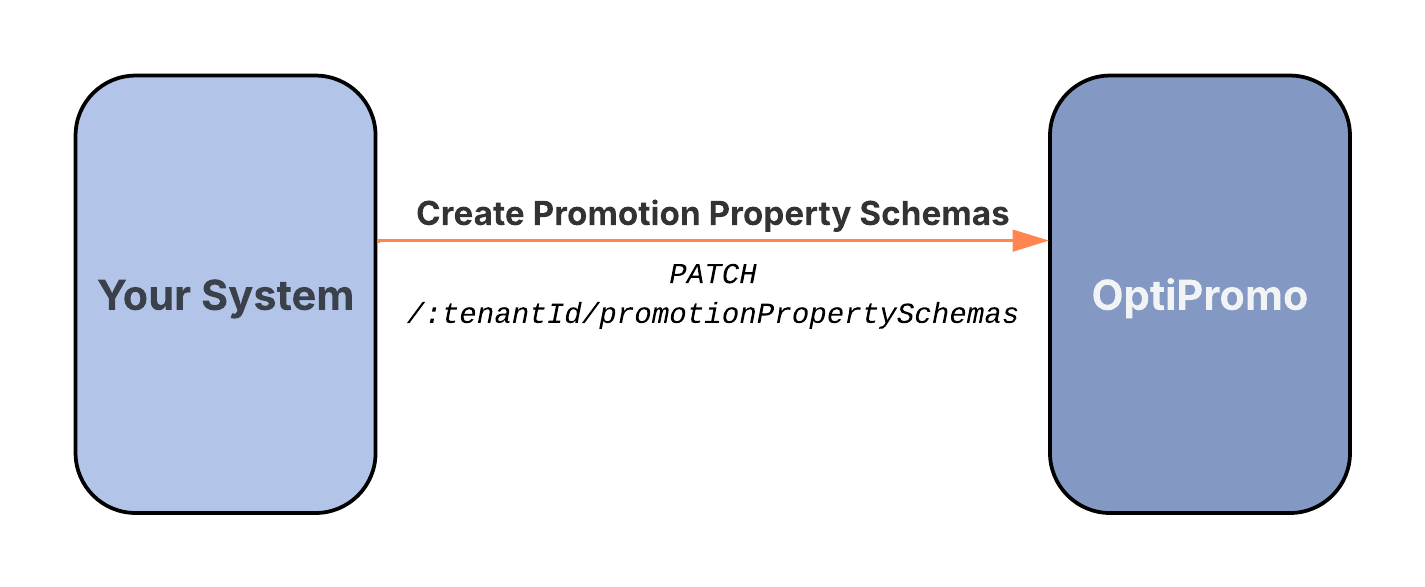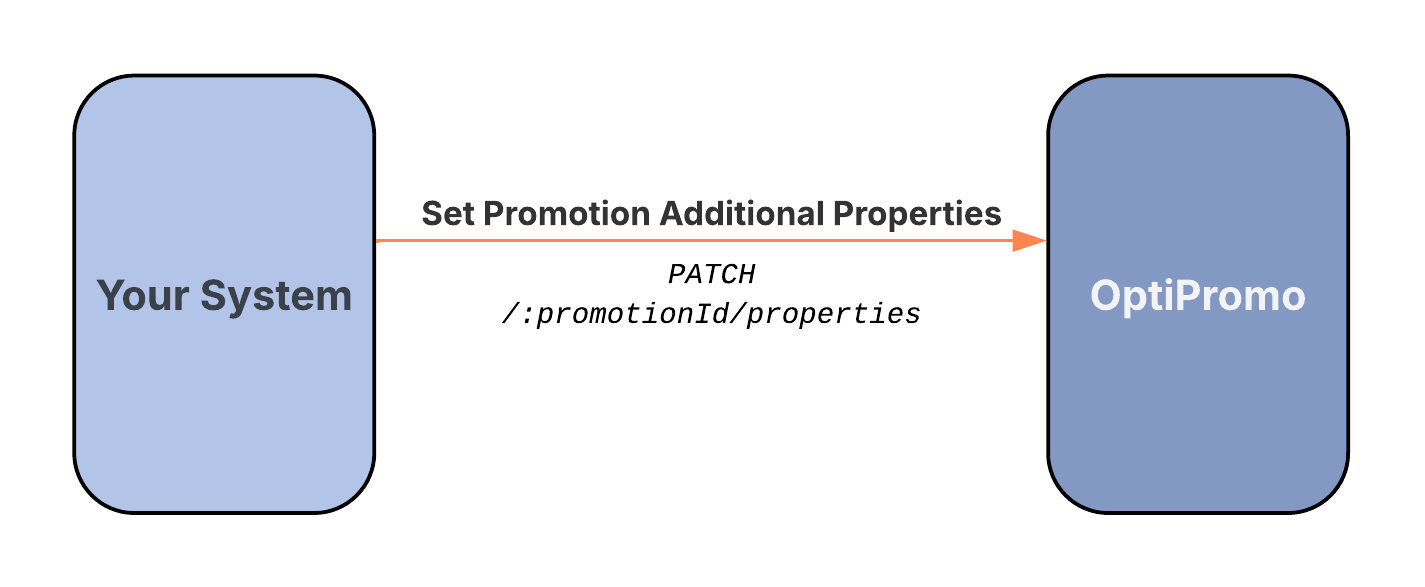Adding Custom Properties
This guide explains how to add custom, structured metadata to your promotions. This feature allows you to enhance your campaigns with flexible data for better targeting, tracking, and integration, all without altering the core logic of the promotion itself.
By using custom properties, you can create smarter, more contextual, and adaptable promotions that can be easily managed at scale.
Prerequisites
- To create schemas: You will need tenant-level permissions.
- To set properties on a promotion: You will need an existing
promotionId.
A Two-Level Process
Adding custom properties is a two-level process that ensures both governance and flexibility.
1. Define Schemas at the Tenant Level
First, you must define the "blueprints" for your custom data at the tenant level. A schema defines a property's key, data type (e.g., string, number, boolean), and any constraints. Creating schemas at this global level ensures consistency and allows for data validation across all your promotions.

API Flow for Creating Tenant-Level Property Schemas
2. Set Values at the Promotion Level
Once a schema has been defined, you can assign specific values for those properties to individual promotions. This is what allows each promotion to behave differently based on its own unique metadata.

API Flow for Setting Promotion-Level Properties
Example Use Cases
Here are some examples of how you might use custom properties:
- Eligible Games: Add a list of game IDs to a promotion to target specific titles in a campaign.
- Custom Expiration Date: Define a unique end date to override system defaults, which is ideal for promotions aligned with external marketing calendars.
- Region Tags: Specify deployment zones like
EU-WestorNA-Mobilefor precise audience targeting. - A/B Testing Flags: Tag variants of a promotion with identifiers like
testGroupAorvariantXto make experimentation and analysis easier. - Integration Hooks: Include third-party identifiers or reference keys to help coordinate actions across different systems.
API Reference
Next Steps
- Learn how to activate, deactivate, and manage the state of your promotions: ➡️ Managing the Promotion Lifecycle
Updated about 2 months ago
